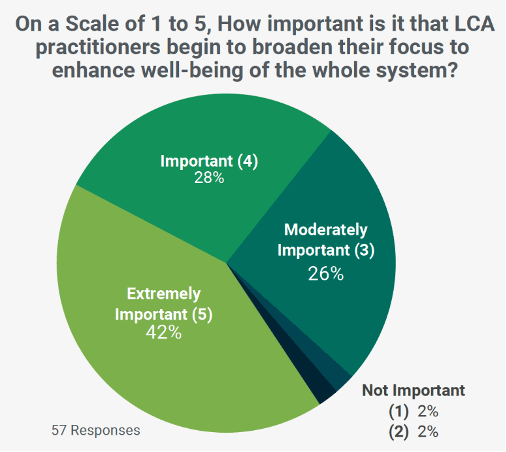What is LCA’s Role in Quantifying Social Justice?
Recent Black Lives Matter protests and the disproportionate impact of the coronavirus pandemic on minority populations have heightened societal awareness of systemic inequalities.

Recent Black Lives Matter protests and the disproportionate impact of the coronavirus pandemic on minority populations have heightened societal awareness of systemic inequalities. Many organizations are struggling to understand their impacts on systemic racism, inequality, and social justice, and many are also working to understand their role in identifying potential solutions to these impacts. The American Center for Life Cycle Assessment (ACLCA), a nonprofit membership organization for LCA practitioners, is one such organization.
Life Cycle Assessment (LCA) is an established scientific approach used by industry, academia, NGOs, and governmental organizations to measure environmental and human-health impacts and guide decisions on efforts to reduce these impacts. In addition to environmentally focused LCA methods, social assessments, such as Sustainable Return on Investment (S-ROI) have advanced in recent years to bring life-cycle thinking to social and socio-economic impacts.
At its recent annual conference, the ACLCA featured a panel entitled “Quantifying Social Justice in LCA.” The intent of the panel was to begin a social justice dialog within the LCA community. Panelists included George Bandy, Andreas Ciroth, Greg Norris, EarthShift Global’s CEO Lise Laurin, and futurist Claire Nelson, a member of EarthShift Global’s Technical Advisory Board. The panel explored the questions of:
- Considering S-ROI as field development, can strengths and weaknesses be analyzed in the context of an expanded assessment incorporating consideration of these issues?
- Is there value in bringing life cycle thinking to these critical issues of institutional racism, inequality, and social justice?
- If so, how can stakeholders participate in this type of assessment?
- What are the risks in applying conventional life-cycle measurements to these issues?
- Are organizations willing to seek solutions to these difficult issues?
In their introductions, panelists shared thoughts on the current challenges, including how often economic activities “privatize the wealth and socialize the risk.” (For example, more than 25% of U.S. waste - of which 80% is electronic waste - is shipped to third-world countries.) One panelist compared the current situation to a veritable “hornet’s nest.”

The consensus of the panel discussion was that, while difficult to quantify, there are enormous benefits to figuring out how to do so in order to turn the hornet’s nest into a “beehive (with honey)”. This will require, among other changes, shifting our belief systems and moving beyond GDP as the measure of economic and societal progress.
More than 25% of conference attendees cited the social justice panel as their favorite element of that day, with one respondent commenting "...loved the Social Justice session with panelists who are outside of our traditional LCA community. Also having this topic as part of the conversation is incredible and inspiring."
Interest in this topic is strong within the LCA community, as measured by the panel attendance and post-conference survey results. Seventy percent of conference attendees stated it is important or extremely important that LCA practitioners consider the whole system (see Fig. 1).
Based on the level of interest in the role of LCA in quantifying social justice, we can anticipate LCA techniques designed to help measure social justice will continue to be a topic for future exploration and development.